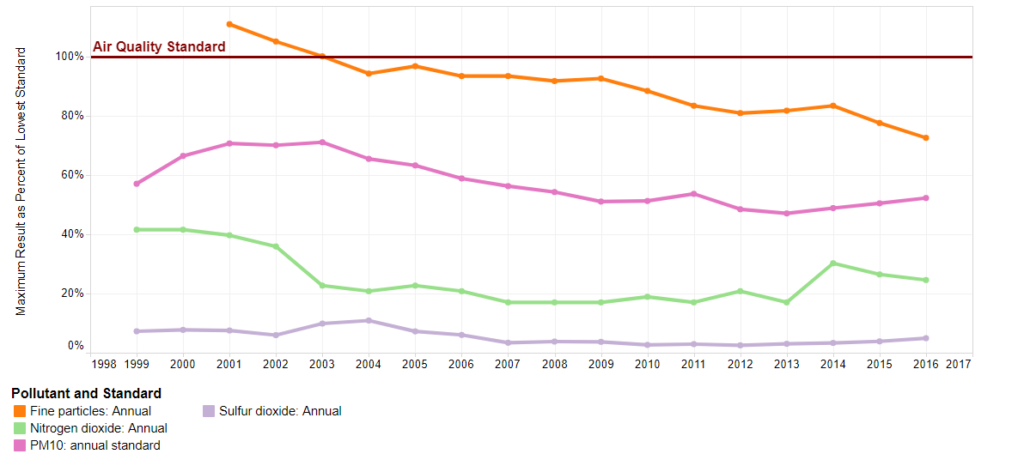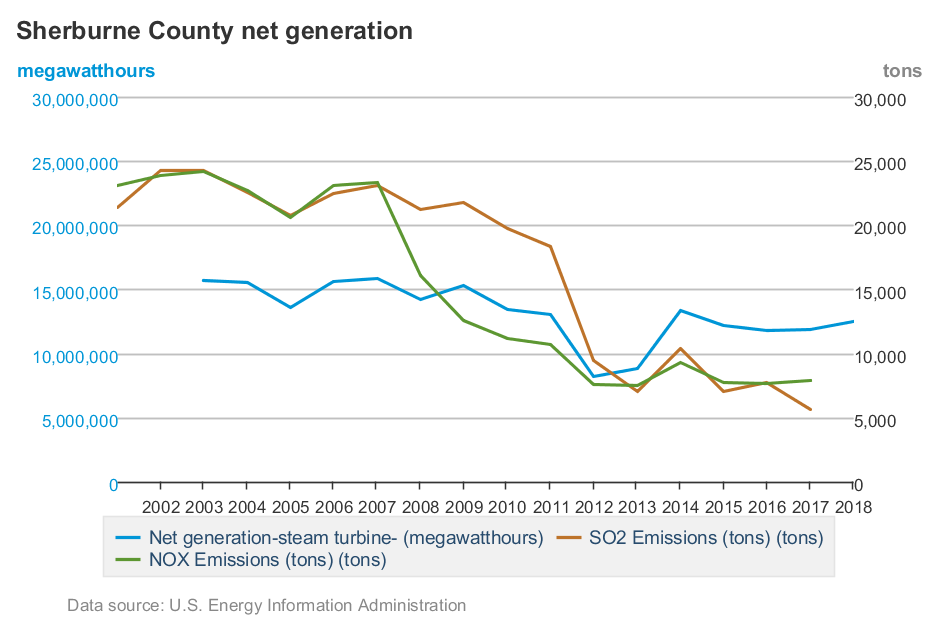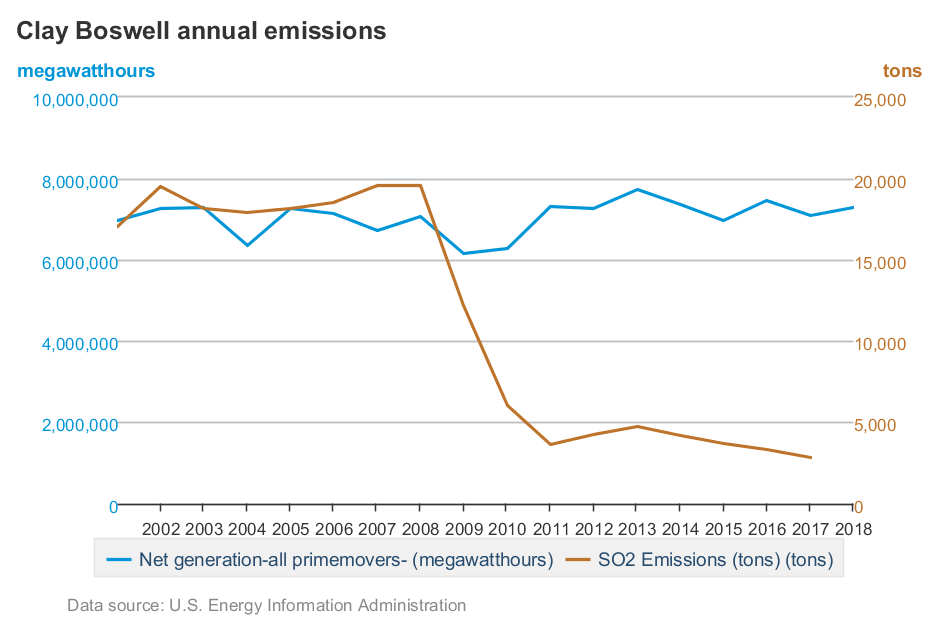Pollution Control Equipment Has Greatly Reduced Emissions at Minnesota’s Clean, Beautiful Coal Plants
Some renewable energy advocacy groups claim that Minnesota should aspire to have cheaper and cleaner electricity by using more wind and solar. Of course, this logic makes no sense because wind and solar increase the cost of electricity in Minnesota, but it is worth looking at whether coal-fired power, which is among the most affordable ways to generate electricity in Minnesota, is actually dirty.
According to data from the Energy Information Administration, it isn’t.
When most people think of coal, they probably think of the smog-filled skies of 1950’s Pittsburgh or scenes from modern-day Beijing, but advanced pollution control technology at coal-fired power plants in the U.S. has greatly reduced the amount of nitrous oxide and sulfur dioxide emitted into the air. These pollution control technologies are a key reason why Minnesota Pollution Control Agency data show Minnesota’s air quality meets the highest environmental standards and are protective of human health among even the most vulnerable populations like children and the elderly.

The graphs below show emissions of nitrous oxide and sulfur dioxide from the largest coal-fired power plants in Minnesota. The first two graphs are the Sherburne County and Allen S. King plants, which Xcel Energy wants to shut down early even though doing so would harm Minnesota families and businesses by forcing them to pay more for their electricity.


Both of these power plants have seen a dramatic reduction in emissions even though they are still producing vast quantities of electricity, and burning lots of coal to do so. This is why the notion of “cheaper and cleaner” is utter non-sense. Coal is cheaper than wind and solar, and pollution control technologies have allowed us to enjoy the benefits of affordable energy and clean air.
The same is true for the Clay Boswell coal plant that powers the mines and paper mills in Northern Minnesota. Despite churning out more electricity today than it did in 2001, the plant had record-low emissions in 2017. This is something that should be celebrated. Instead, environmental groups want to shut the plant down, and probably the iron mines, too.

Data like this are important to fighting the narrative furthered by renewable energy apologists that coal-fired power plants are causing all kinds of premature deaths and asthma, too. Most people don’t realize that indoor air quality is worse than outdoor air quality, and a big reason our outdoor air is cleaner is because of the pollution control equipment we place on our power plants.
This is why Minnesota should continue to burn clean, beautiful coal long after 2030, when Xcel wants to shut down their affordable coal plants to pad their corporate profits.
